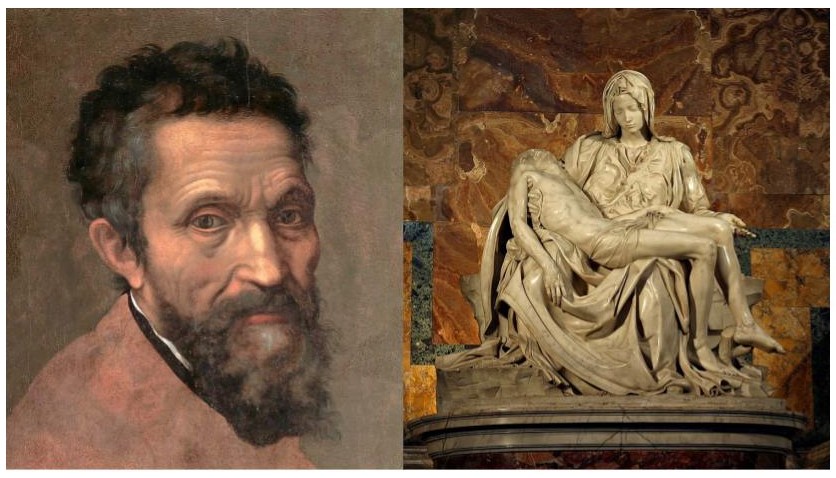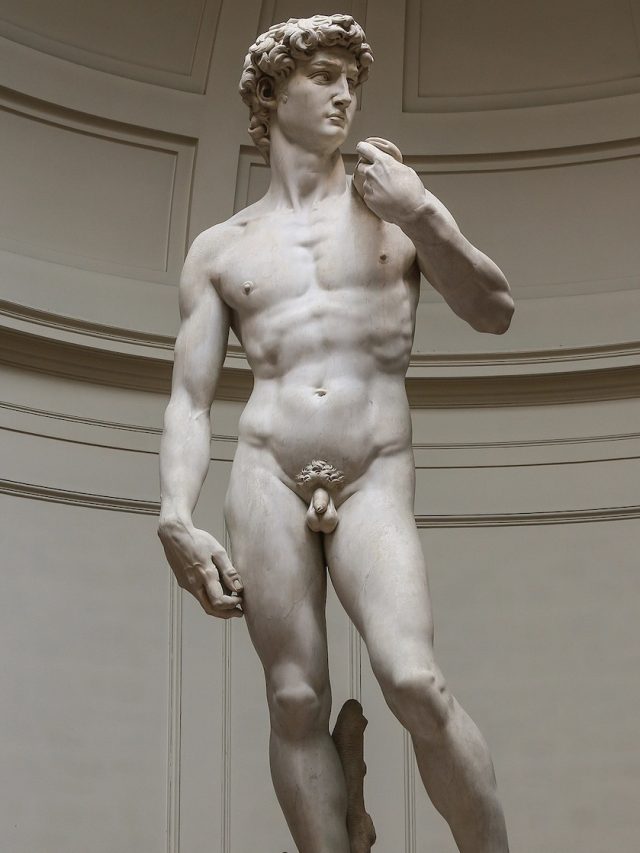Often referred to as Michelangelo, Michelangelo di Lodovico Buonarroti Simoni was an Italian Renaissance artist, painter, architect, and poet. He passed away in Rome on February 18, 1564, having been born on March 6, 1475, in Caprese, Republic of Florence (modern-day Tuscany, Italy). Considered by many to be one of the greatest artists in history, Michelangelo played a pivotal role in the High Renaissance.
Michelangelo was a skilled architect who created structures like Rome’s St. Peter’s Basilica’s dome. His status as one of the greatest artists in history has been cemented by his contributions to the field of art and his influence on later generations.
Michelangelo’s Most Famous Painting
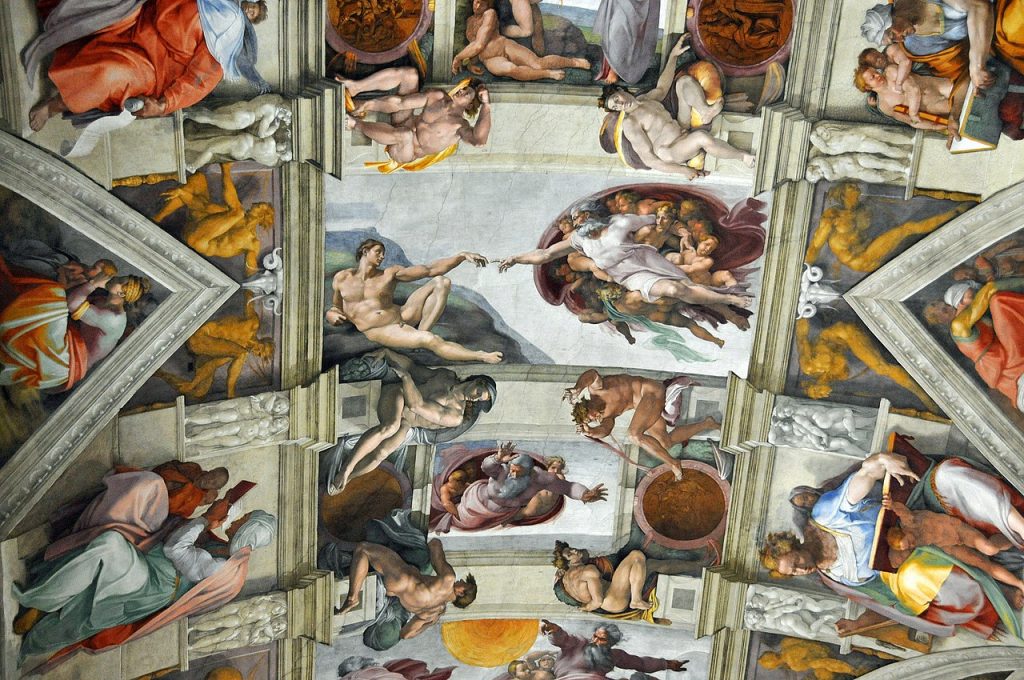
Michelangelo is less known for his conventional canvas paintings and is more recognised for his sculptures and frescoes, especially the ceiling of the Sistine Chapel. However, “The Last Judgment,” one of his most well-known works of art, is included in the Sistine Chapel’s altar wall frescoes.
Painted between 1536 and 1541, “The Last Punishment” shows the second coming of Christ and the ultimate judgment of humanity; it is a huge composition with many people, angels, and saints that takes up the entire chapel’s altar wall. The picture is renowned for its striking and dramatic depiction of divine justice.
David (1501–1504) is a marble statue depicting the biblical figure David, who used a single stone to vanquish the enormous Goliath. The marble sculpture Pieta (c. 1498–1499) shows the Virgin Mary cradling Jesus Christ’s body following his crucifixion the most celebrated work of Michelangelo. The Sistine Chapel Ceiling features a fresco called The Creation of Adam, which portrays the moment when God touches Adam to give him life. It is famous for showing their hands stretching out to touch.
Michelangelo’s Sistine Chapel Painting
The set of murals that cover the Sistine Chapel’s ceiling is Michelangelo’s most well-known work of art. Pope Julius II commissioned the project, which took four years to complete, from 1508 to 1512. The ceiling painting by Michelangelo is regarded as one of the greatest pieces of Western art. Nine scenes from the Book of Genesis, which begin with the creation of the universe and move through numerous biblical stories, are shown in the ceiling frescoes.
This well-known fresco portrays the scene where God extends his hand to touch Adam’s hand, giving him the spark of life. A classic picture in art history is God’s and Adam’s outstretched fingers. The creation of Eve from Adam’s rib is depicted in another scenario from the Genesis story. Although it is a distinct fresco on the altar wall, Michelangelo’s work in the Sistine Chapel also includes it in a significant way.
Michelangelo’s David
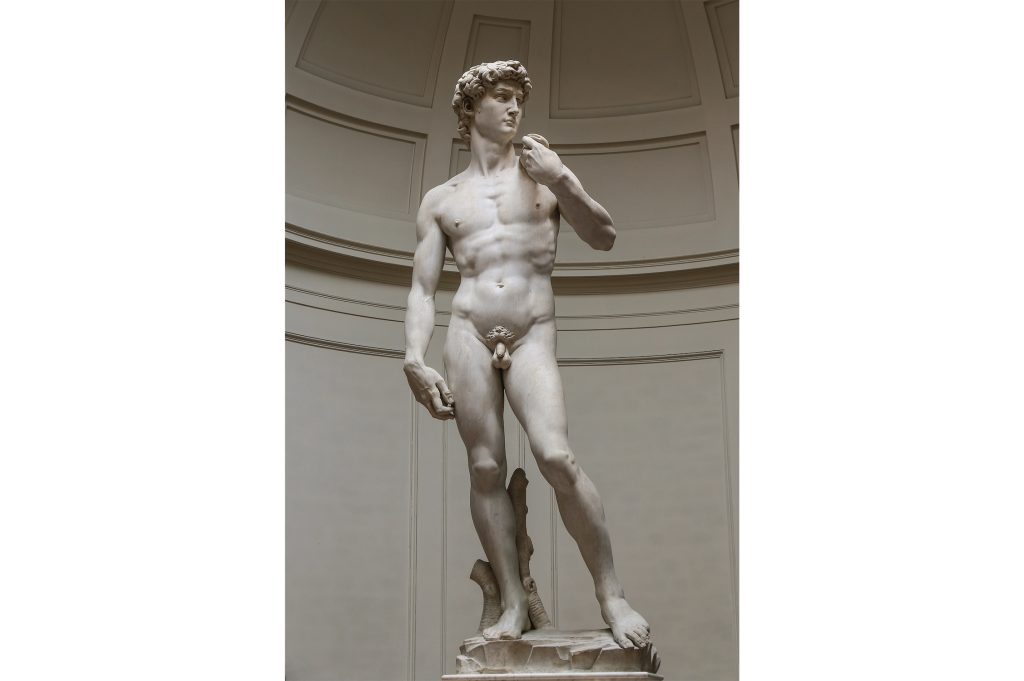
Courtesy: ARTnews
One of the most well-known sculptures in the entire world and a prototype of Renaissance art is Michelangelo’s “David.” This marble figure, which is around 17 feet (5.17 meters) tall, was made between 1501 and 1504. The statue honours David, the biblical hero who is renowned for using just one stone to vanquish the enormous Goliath.
The highly idealized portrayal of David by Michelangelo demonstrates the Renaissance’s emphasis on the traditional standards of proportion and beauty. David’s young power and flawless physical appearance are captured in the sculpture. David is standing with his weight on one leg in the contrapposto position. The statue appears realistic because of its timeless attitude, which conveys movement and authenticity.
David appears to be very focused and determined based on his facial expression. Before the fight, he is shown reflecting, highlighting the resilience of the human spirit. Michelangelo depicted muscles, veins, and other anatomical features of the human body with great care and attention to detail. This is indicative of his extensive understanding of human anatomy, which he gained via dissections.
Michelangelo’s The Last Judgement
Inspired by Christian theology and the Book of Revelation, the fresco is distinguished by its dynamic and forceful composition, which has numerous characters placed in different ways to evoke emotion and movement. “The Last Judgment” by Michelangelo is a massive fresco that hangs on the altar wall of the Sistine Chapel in Vatican City rather than a painting. The famous ceiling frescoes in the same church were completed by Michelangelo decades after he created this fresco, which was commissioned by Pope Paul III and painted between 1536 and 1541.
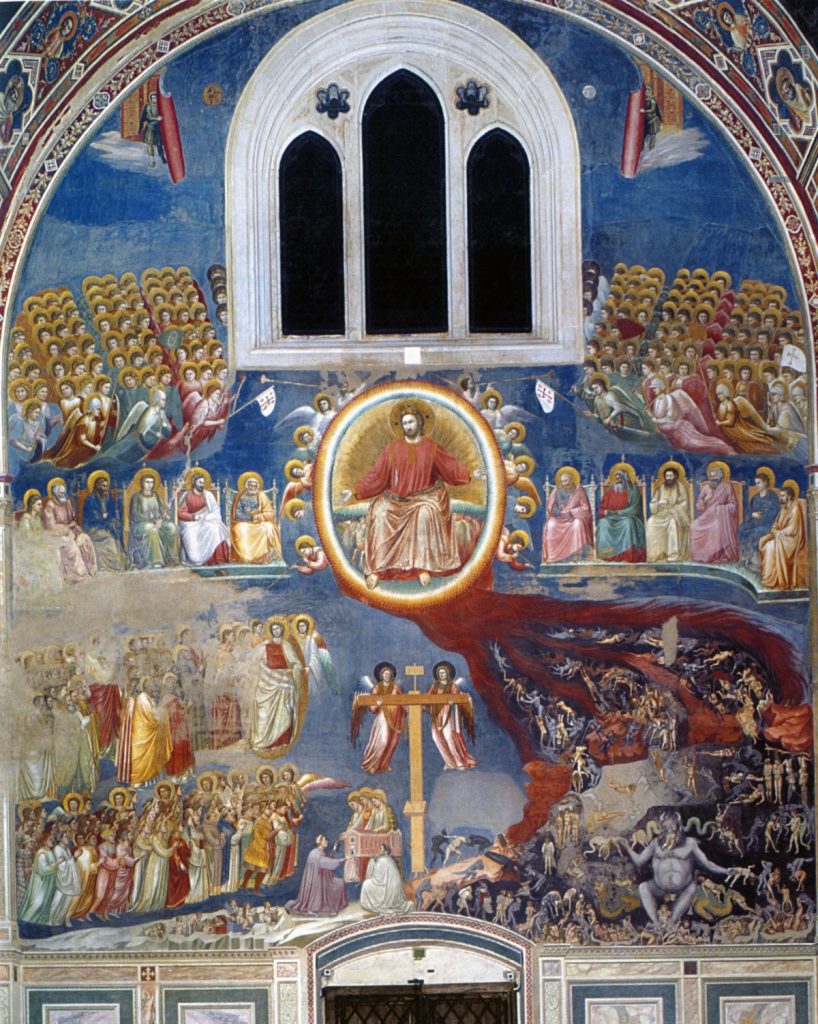
A massive picture of Christ in the judicial role, with his left hand outstretched in mercy, and his right inspired in condemnation, sits at the composition’s centre. Saints, angels, and other celestial beings envelop Christ. The upper part of the painting depicts the blessed ascending to heaven, while the lower portion shows the blamed being flung into hell. Michelangelo depicted the happiness of the saved and the agony of the damned with such intensity that it was a fresco. The dynamic poses and expressive faces enhance the artwork’s emotional effect.
Creation Of Adam By Michelangelo
A famous and iconic fresco on the ceiling of the Sistine Chapel in Vatican City is Michelangelo’s “The Creation of Adam.” This High Renaissance masterwork, which Michelangelo painted on the ceiling, is one of nine scenes taken from the Book of Genesis. It was created between 1508 and 1512. In “The Creation of Adam,” the biblical story’s pivotal moment—when God gives life to Adam—is shown. The piece revolves around the dynamic interplay between God and Adam’s hands, highlighting the passing on of life and the divine spark. The composition’s most striking visual emblem is the outstretched fingers of God and Adam.
The emotional resonance, creative use of colour and shape, and composition of “The Creation of Adam” are all highly praised. The picture of the hands extended has evolved into a well-known representation of humanity’s relationship with God, appearing frequently in popular culture and art.

